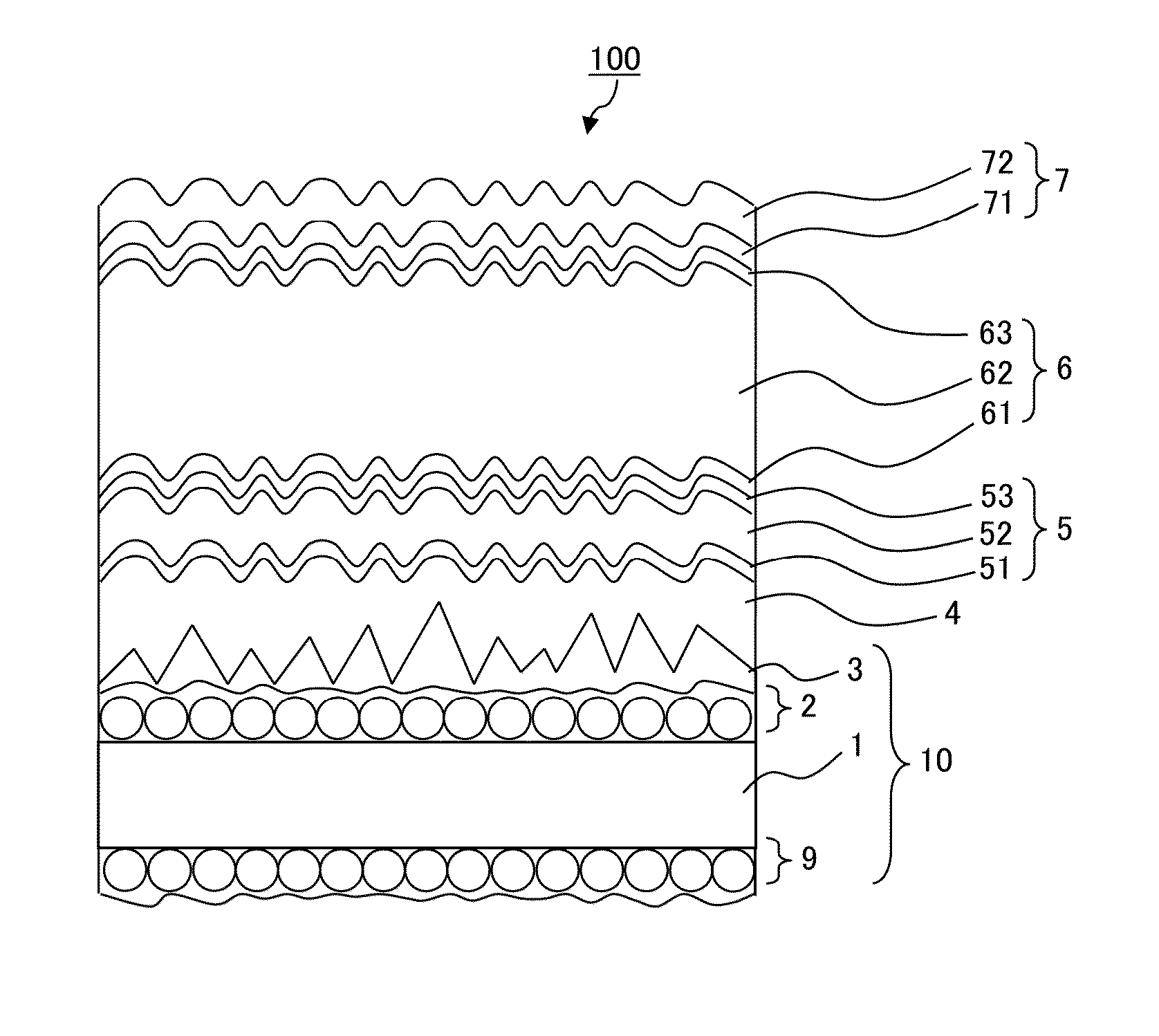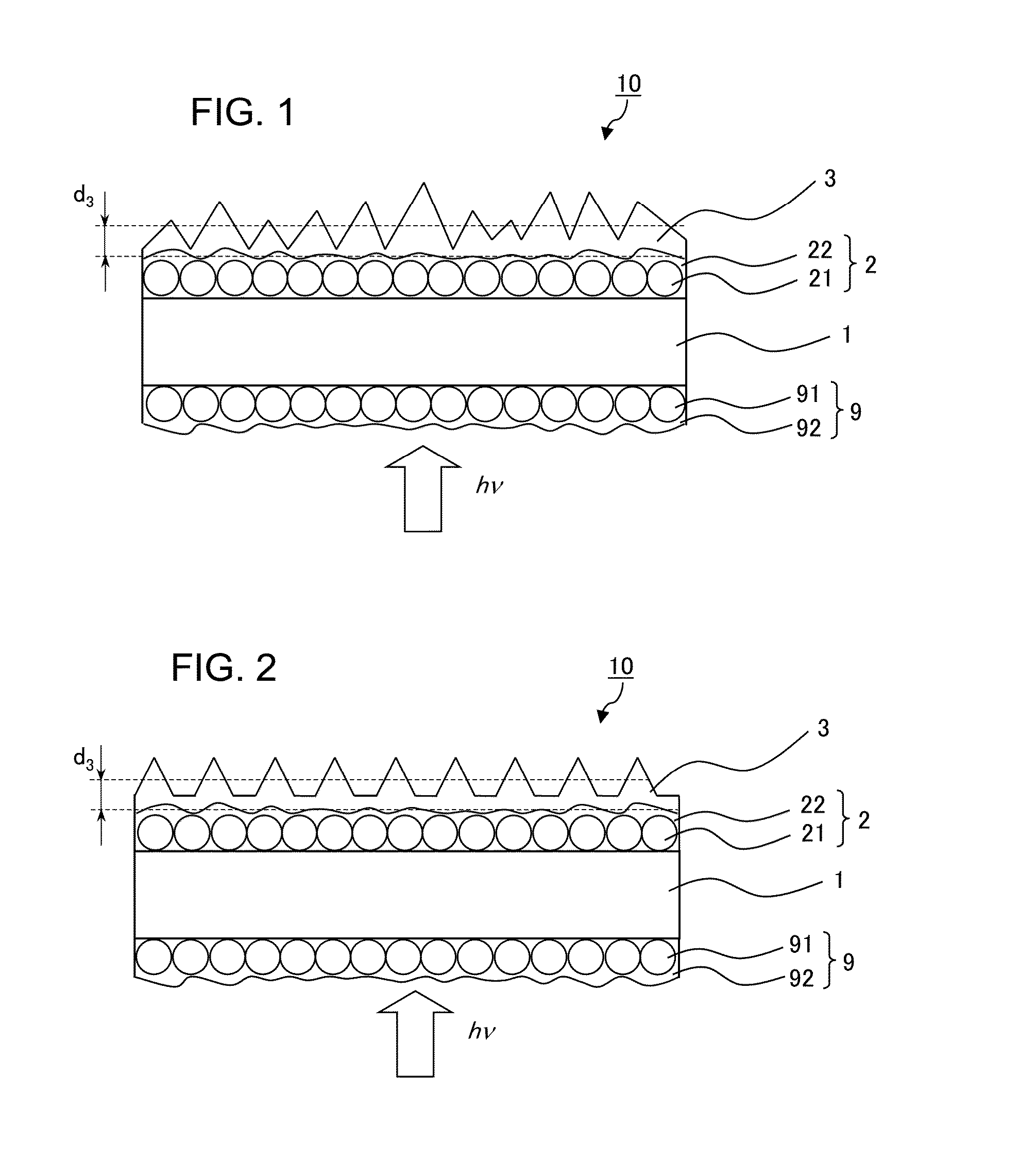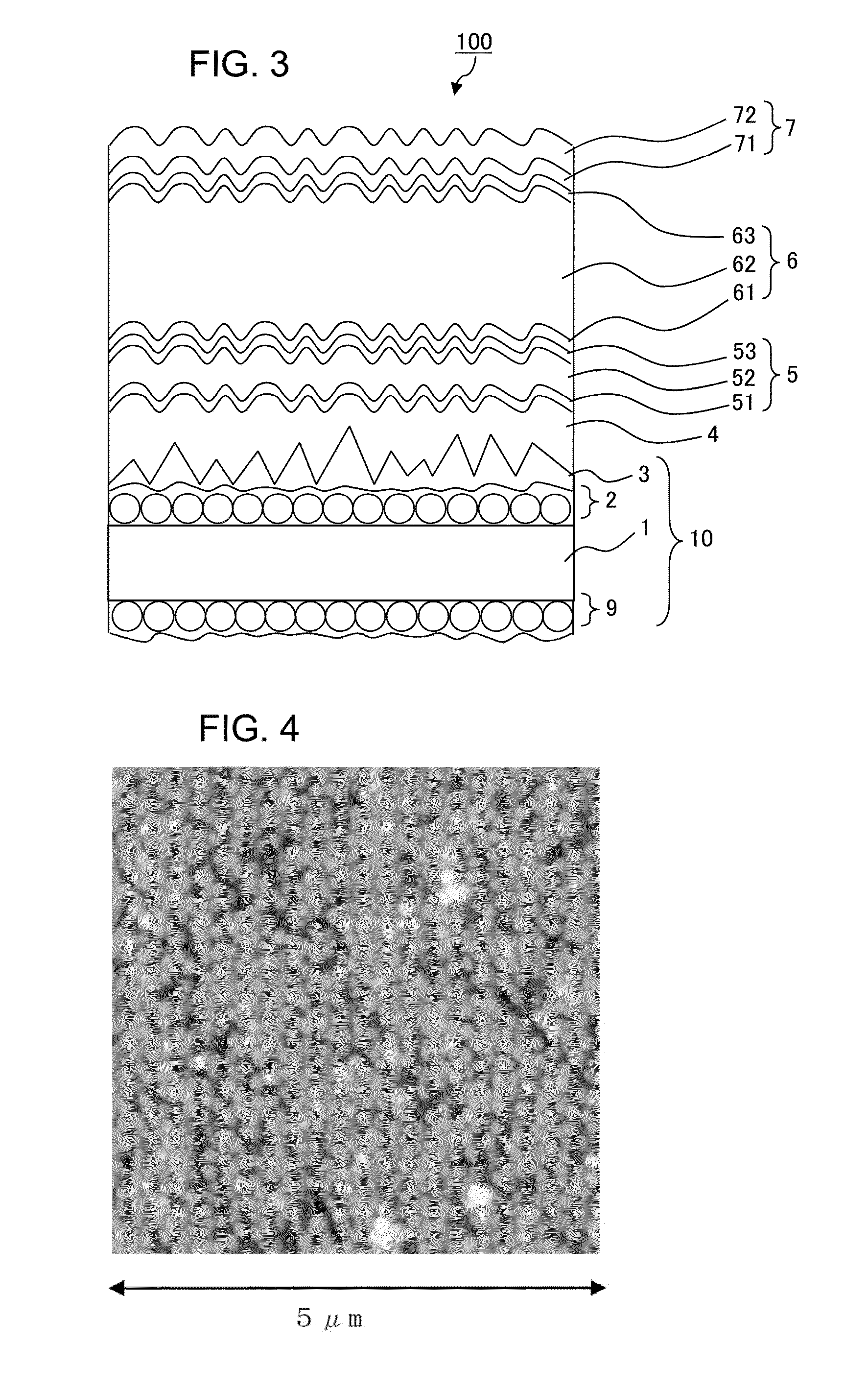Thin film solar cell and method for manufacturing same
a solar cell and film technology, applied in the field of thin film solar cells, can solve the problems of insufficient suppression of reflection by the substrate, limited design, and peeling of the layer, and achieve the effects of improving the light confinement effect, improving the optical path length of incident light, and improving the characteristics of solar cells
- Summary
- Abstract
- Description
- Claims
- Application Information
AI Technical Summary
Benefits of technology
Problems solved by technology
Method used
Image
Examples
example 1
Formation of Undercoat Layer
[0155]An alkali-free glass plate (trade name: OA-10; manufactured by Nippon Electric Glass Co., Ltd.; thickness: 0.7 mm) was used as a glass base, and a transparent undercoat layer was formed on the glass plate.
[0156]11.90 g of an oligomer of tetraethoxysilane (polymerization degree n: 4 to 6) as a binder, and 24.38 g of an aqueous dispersion (solid content: 40%) of a silica fine particle component having an average particle size of 90 nm as fine particles were sequentially added to a mixed liquid of 24.38 g of water, 58.71 g of isopropyl alcohol and 1.14 g of 35% hydrochloric acid. The mixture was stirred / mixed at room temperature for 4 hours. Thereafter, 529.50 g of isopropanol was added as a diluent solvent, and the mixture was stirred to prepare a fine particle-containing coating solution.
[0157]A coating was performed by a dip coating method of dipping the glass base in the coating solution and drawing up the glass base at a speed of 0.1 m / minute. Dip...
example 2
Formation of Undercoat Layer
[0169]A transparent undercoat layer was formed on a glass base in the same manner as in example 1. In the obtained substrate with a transparent undercoat layer, the area coverage with silica fine particles was 90%, and a dense irregularity shape was observed.
[0170][Preparation of Matrix]
[0171]First, an oxide film (silicon oxide film) was formed on the surface of a single-crystal silicon wafer by thermal oxidation. A resist (photosensitive protective film) was applied by spin coating to the entire surface of the single-crystal on which the oxide film is formed. Next, using a photomask having circular openings with a diameter of 700 μm at pitches of 1000 μm, UV light with a wavelength of 365 nm was applied to expose the silicon wafer at the openings. The UV light-exposed wafer was dipped in a developer to develop a pattern of the photomask, so that a resist film was selectively formed on the wafer surface. Next, etching was performed using hydrofluoric acid...
reference example 1
[0196]In Reference Example 1, the amount of fine particles in a fine particle-containing coating solution for forming a transparent undercoat layer was increased as compared to Example 1. Otherwise in the same manner as in Example 1, a transparent undercoat layer was formed on a glass base. The arithmetic mean roughness of the surface of the transparent undercoat layer was 19 nm, and the coverage with fine particles was 95%. An insulating irregularity layer was formed on the transparent undercoat layer in the same manner as in Example 1.
PUM
 Login to View More
Login to View More Abstract
Description
Claims
Application Information
 Login to View More
Login to View More - R&D
- Intellectual Property
- Life Sciences
- Materials
- Tech Scout
- Unparalleled Data Quality
- Higher Quality Content
- 60% Fewer Hallucinations
Browse by: Latest US Patents, China's latest patents, Technical Efficacy Thesaurus, Application Domain, Technology Topic, Popular Technical Reports.
© 2025 PatSnap. All rights reserved.Legal|Privacy policy|Modern Slavery Act Transparency Statement|Sitemap|About US| Contact US: help@patsnap.com



